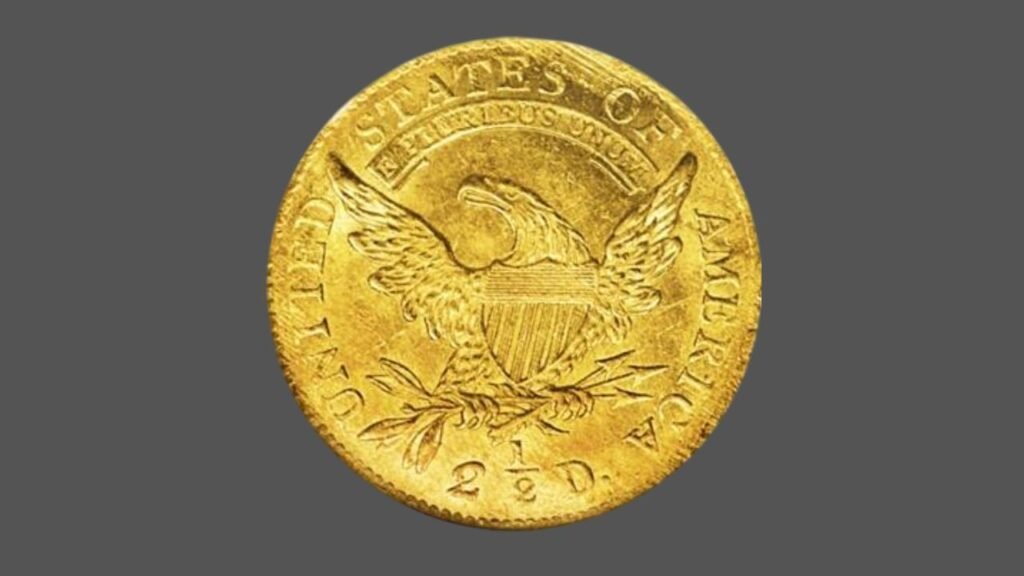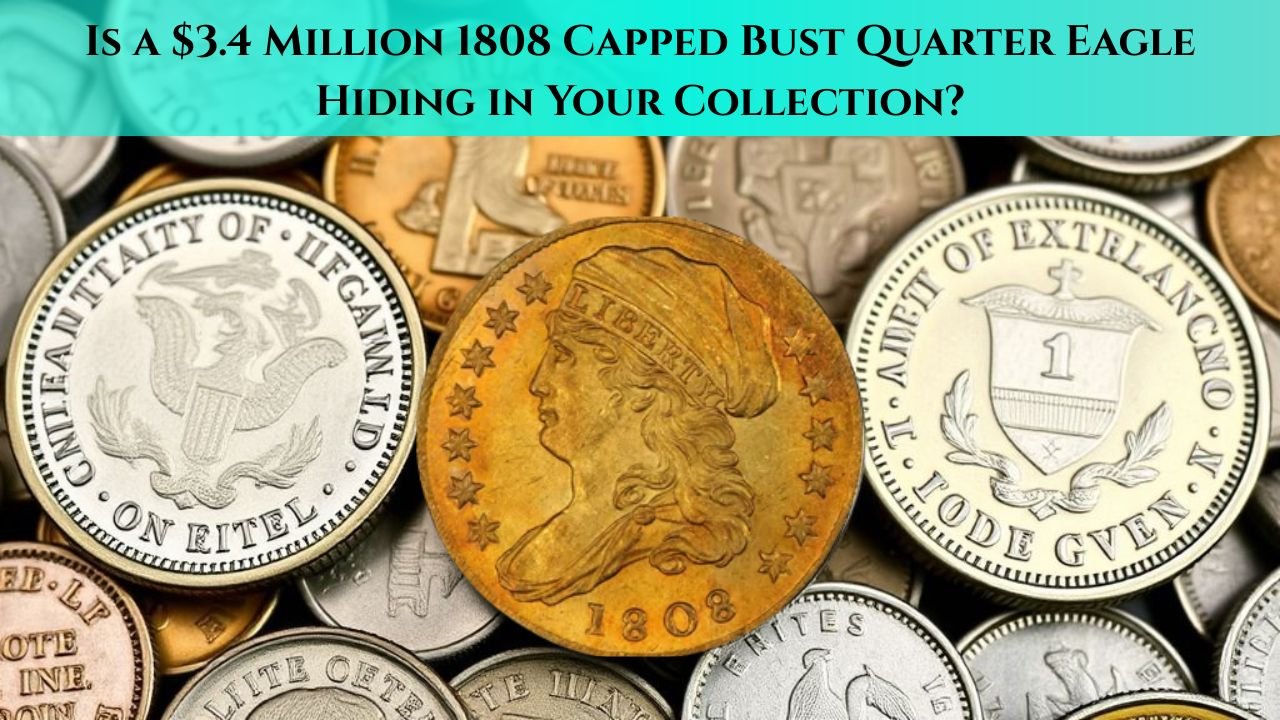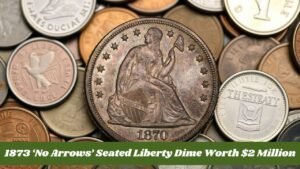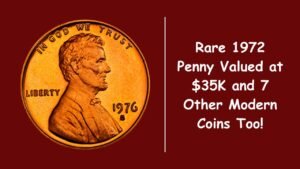The world of rare coins is complete of hidden treasures, however few are as treasured and well known because the 1808 Capped Bust Quarter Eagle. This extremely rare U.S. Gold coin recently offered for a file-breaking $3.4 million, making collectors and informal coin proprietors alike surprise.
Even if you don’t have this precise coin, there’s still a hazard you very own a valuable piece of numismatic records. Let’s dive into the captivating story at the back of the 1808 Capped Bust Quarter Eagle, its value, and how you can discover rare coins really worth a fortune.
What Is the 1808 Capped Bust Quarter Eagle?
The 1808 Capped Bust Quarter Eagle is a $2.50 gold coin issued completely in 1808. Designed with the aid of John Reich, this coin is awesome for its specific depiction of Lady Liberty carrying a soft cap and a heraldic eagle at the reverse.
What makes this coin so special? It become simplest minted for twelve months, and of the 2,710 originally produced, simplest around 125 to 150 remain nowadays. Many were melted down or lost through the years, making it one of the rarest gold coins in U.S. Records.
The Design and Symbolism

- Obverse (Front): Features a left-dealing with portrait of Lady Liberty with a smooth cap, surrounded by 13 stars representing the unique U.S. Colonies. This design represented freedom and the spirit of a young state.
- Reverse (Back): Displays a heraldic eagle with a protect, clutching arrows (symbolizing military readiness) and an olive branch (signifying peace). This layout become supposed to showcase the strength and independence of the US.
John Reich’s paintings in this coin changed into part of a broader effort to modernize U.S. Forex, with the Capped Bust fashion being brought to more than one denominations, including the half dollar and dime.
Why Is 1808 Capped Bust Quarter Eagle So Valuable?
Several elements contribute to the incredible price of the 1808 Capped Bust Quarter Eagle:
1. Extremely Low Mintage
Only 2,710 of these coins have been ever struck, making it one of the lowest-mintage U.S. Gold coins. Because so few have been made, they were by no means broadly circulated, increasing their rarity.
2. Historical Significance
This turned into the first and simplest $2.50 gold coin designed by John Reich, who was a pivotal discern in early American coin layout. His paintings stimulated U.S. Forex for many years.
3. Surviving Population
Most early gold coins have been melted down for their steel content at some stage in economic crises or while new coin designs had been added. Today, handiest 125 to 150 examples of this coin exist, making it incredibly acceptable to collectors.
4. Record-Breaking Auction Prices
In 2024, a specimen graded PCGS MS65 bought for $3.4 million, one of the highest charges ever paid for a $2.50 gold coin. Coins in decrease grades nonetheless fetch six-parent sums.
5. Condition Matters
As with all rare coins, condition plays a considerable role in price. A properly-preserved Mint State (MS) example with minimal wear is significantly extra treasured than a heavily circulated one.
How to Identify a Valuable Coin in Your Collection

Even if you don’t have the 1808 Capped Bust Quarter Eagle, you may nevertheless own a treasured coin. Here’s how to check your coins for hidden treasures:
Step 1: Examine the Coin’s Date and Mint Mark
- Older U.S. Coins (pre-1933 gold coins, early silver greenbacks, and rare cents) have a tendency to be greater precious. If you discover a coin dated before 1900, set it apart for further evaluation.
- Rare mint marks (determined near the date or on the opposite side) can notably boom a coin’s well worth.
Step 2: Look for Minting Errors
Rare minting errors could make a coin a great deal more precious. Examples encompass:
- Double Strikes (whilst a coin is stamped twice)
- Off-Center Strikes
- Misprinted Dates
Step 3: Assess the Coin’s Condition
Coin grading is crucial in determining value. Coins graded MS60 or higher (Mint State, uncirculated condition) are usually really worth a great deal extra than worn-out ones.
Step 4: Use Online Valuation Tools
Websites like NGC Coin Price Guide and PCGS Price Guide offer actual-time valuation estimates for rare coins.
Step 5: Consult a Professional
If you think you’ve got a valuable coin, touch a certified numismatist or a prime coin grading service such as PCGS (Professional Coin Grading Service) or NGC (Numismatic Guaranty Corporation).
Conclusion
The 1808 Capped Bust Quarter Eagle is the stuff of coin collecting legends. Its rarity, historical significance, and high market value make it one of the most coveted pieces in U.S. coinage. If you inherit old coins or come across a vintage collection, take the time to check them carefully — especially if they contain early 19th-century gold coins.
FAQ’s
How do I authenticate an 1808 Capped Bust Quarter Eagle?
Check its weight (4.37 grams), diameter (18 mm), and gold content (91.67%). Professional grading offerings like PCGS and NGC can verify authenticity.
What makes a coin precious?
Factors include rarity, condition, call for, and historical importance. Coins with low mintage, errors, or high grades have a tendency to be the maximum valuable.
Where can I promote rare coins?
Major auction houses (Heritage Auctions, Stack’s Bowers), online marketplaces (eBay, Great Collections), and respectable coin dealers.


